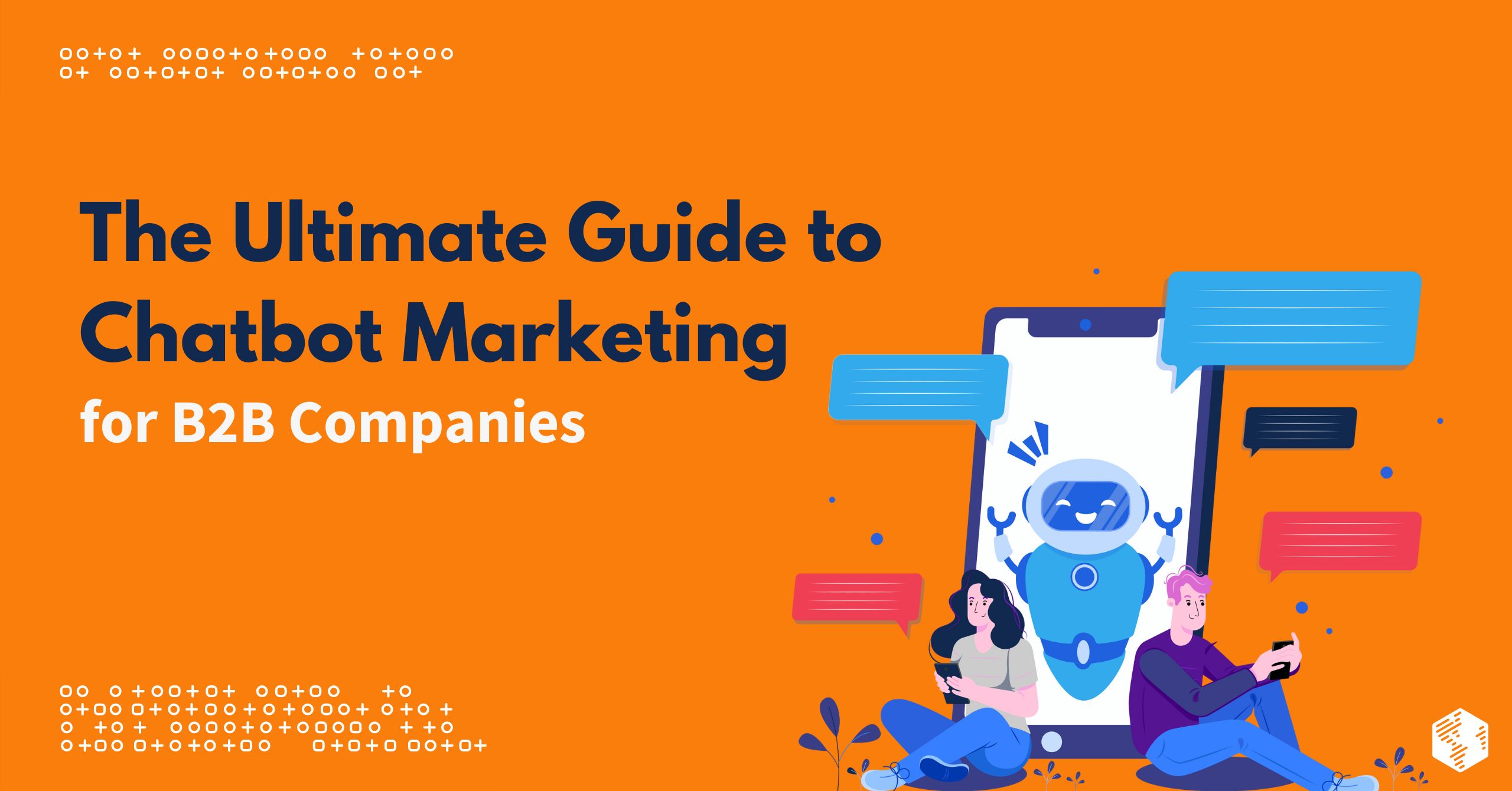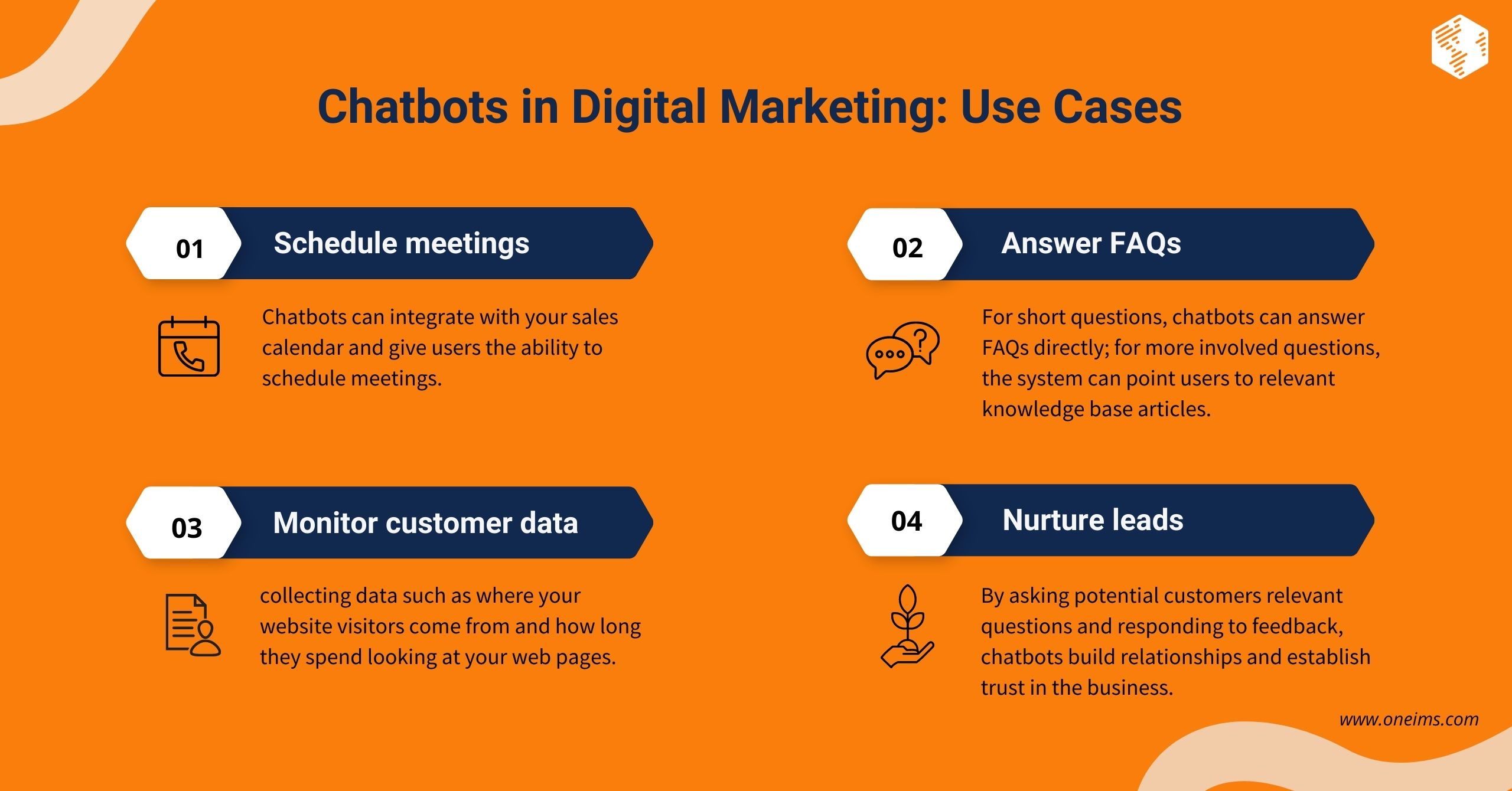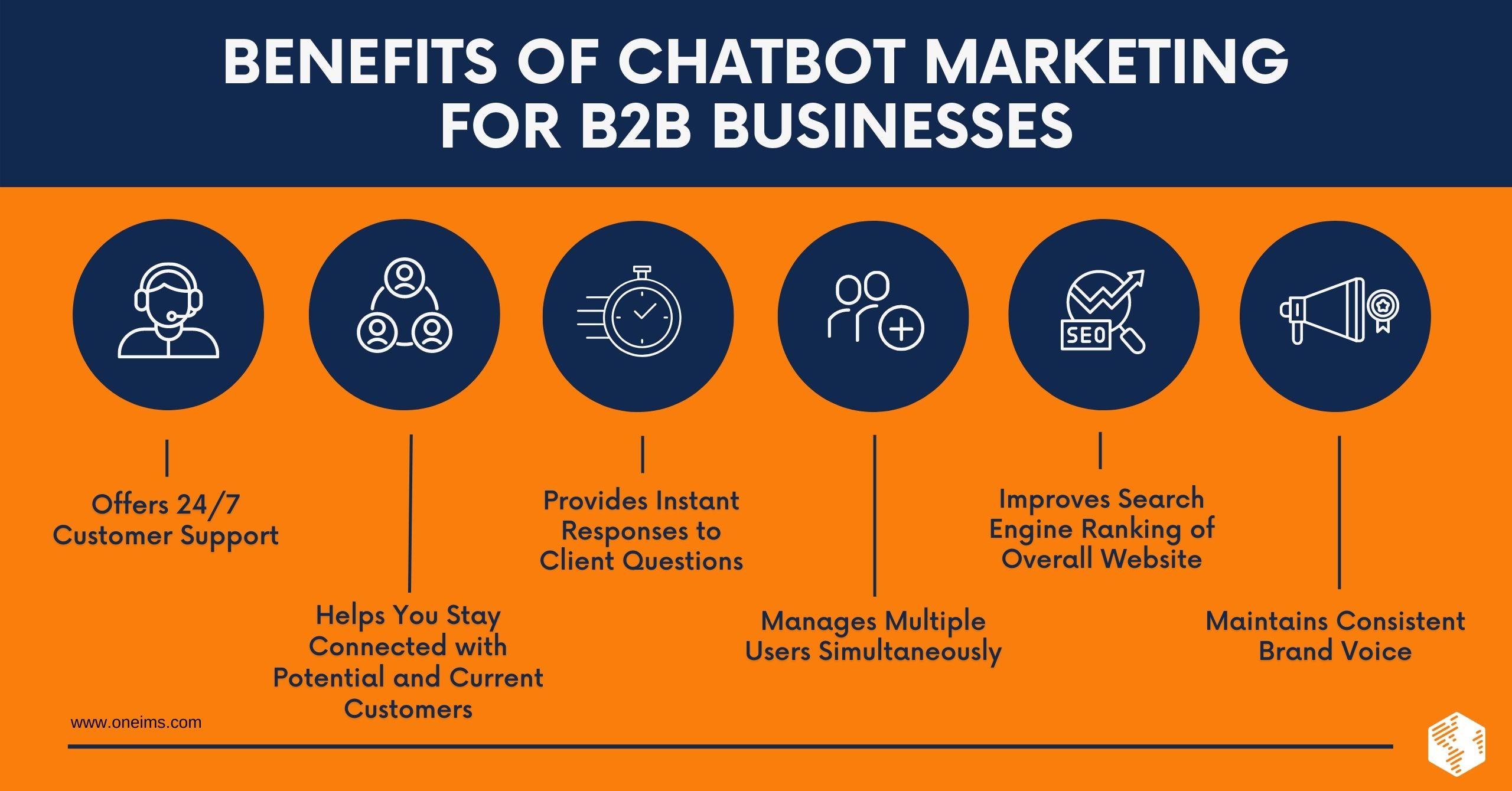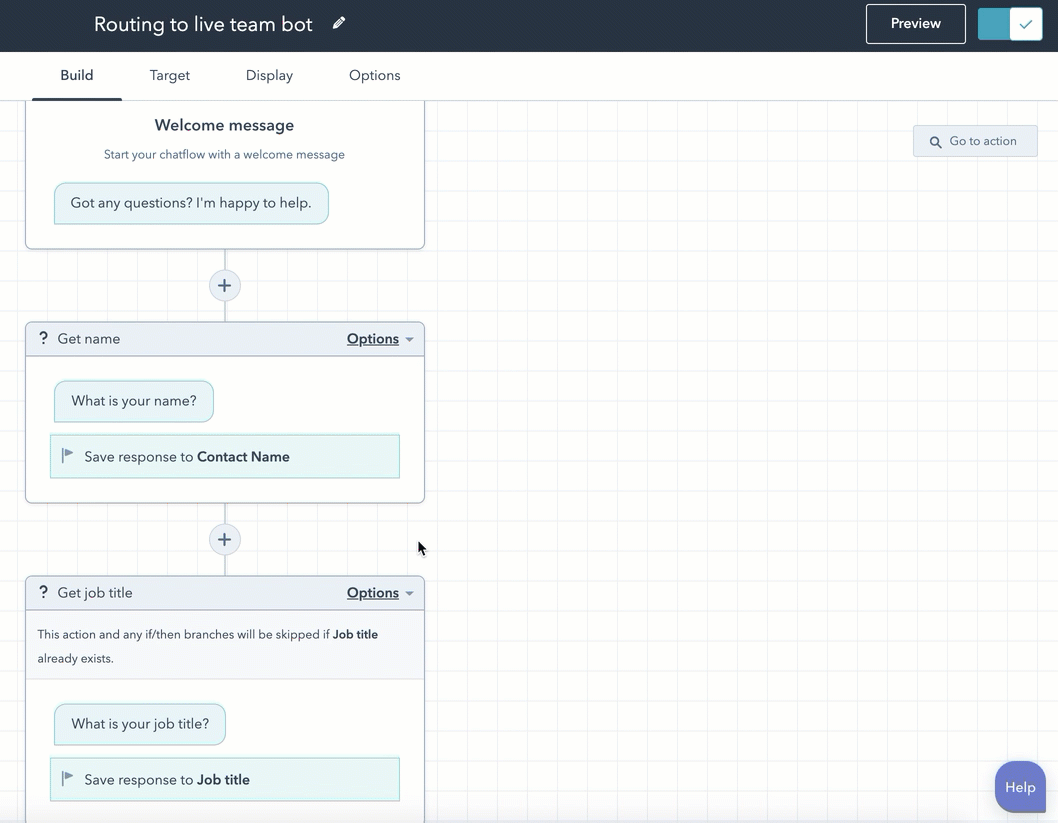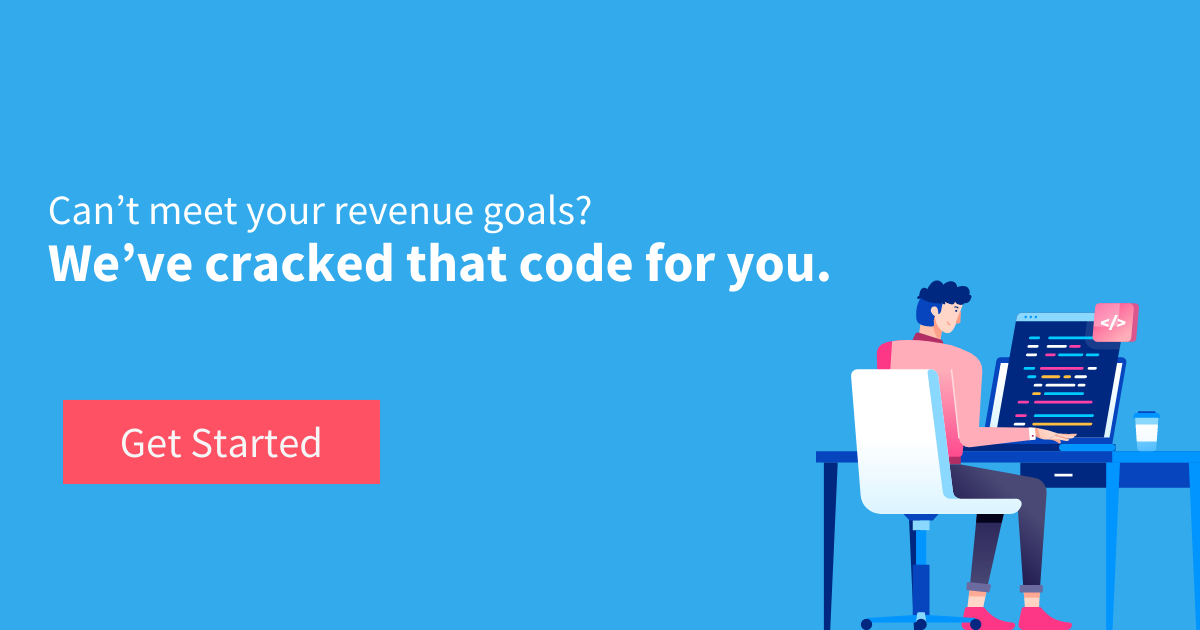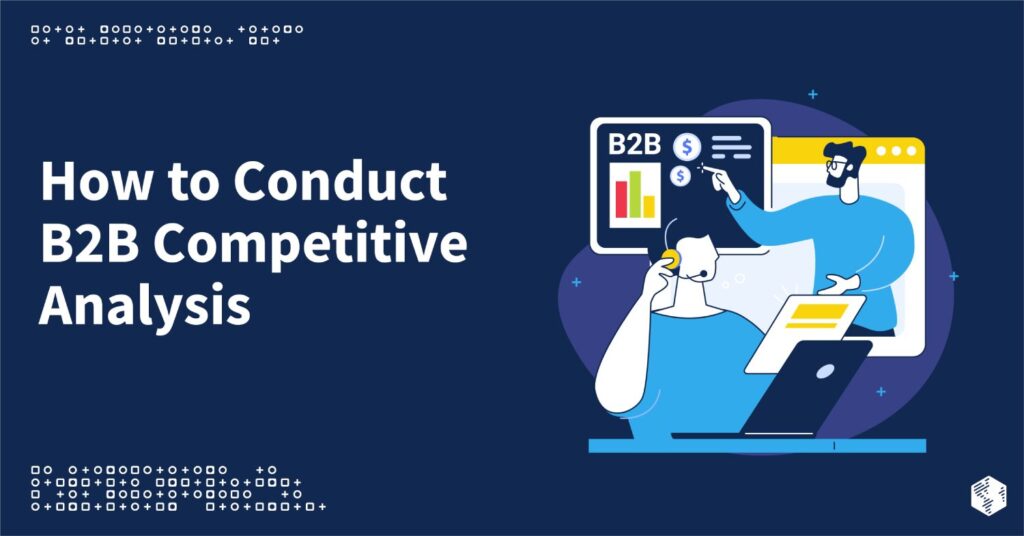The buying habits of consumers are changing. They have unlimited purchasing options at their fingertips, and now more than ever, buyers are making decisions based on factors other than price—such as, increasingly, their relationship and experience with the company.
Customers expect a positive customer experience. They want to engage with companies on their own terms and expect businesses to meet them where they spend their time. If your business-to-business (B2B) company wants to stay competitive, your organization must deliver on these expectations.
One way to deliver the customer experience buyers have come to expect?
Chatbot software.
Chatbots are a fundamental tool in the B2B marketing landscape. Using chatbot software, companies can improve customer support, interact with potential and current customers, automate customer interactions, and more.
B2B companies that develop an effective enterprise chatbot strategy ensure their organization can keep up with the rising demands of website visitors.
What Are Chatbots?
Chatbots are software applications powered by artificial intelligence (AI) or sets of rules that are used to mimic real conversations between users and bots. They can be installed on websites, social media channels, and other messaging platforms to conduct online conversations through speech or text.
When installed on your B2B company website, these chatbots can simulate conversation with customers. The end-user answers a chatbot prompt, and the chatbot responds to them with relevant options, pre-programmed information, or answers to frequently asked questions (FAQs). Based on the needs of the customer, the chatbot can continue the conversation or transfer it to one of your sales reps or customer service agents.
This technology plays a part in supporting your customer-facing teams by easily handling multiple, simultaneous customer interactions. And, thanks to improvements in programming logic and artificial intelligence (AI), chatbots continue to improve their resemblance to human interaction.
Is a Chatbot the Right Fit for Your B2B Website?
If your B2B company hasn’t considered adding a chatbot to your website . . . think again.
A chatbot marketing strategy may make a significant, positive impact on your organization’s revenue goals. At the same time, your company may not be ready for a chatbot. (Keep in mind that as your business grows, your needs will change. Even if chatbots aren’t a good fit for your company now, they may be in the future.)
To determine whether your business should invest in a chatbot marketing strategy, consider these signs. Do they sound familiar? If so, a chatbot may be the right choice.
Sign #1: Your Website Relies on a Traditional Contact Page or Form
Contacting your company should be an effortless process for your customers.
If your website visitors want to contact you, how many steps do they have to follow? Do they have to navigate to a contact page and then either open an email or make a phone call? Is there a contact form where they have to enter all their information line by line and hope to get a response?
Both traditional contact methods require the buyers to do the heavy lifting. Chatbots are a great alternative and make it easier than ever for your customers to reach you.
Sign #2: You Have a Small Customer Success and/or Sales Team
Chatbots can take on a lot of the routine queries your customers have. You can even create a chatbot workflow that automates part of the sales and customer service process. Then, even if your B2B company doesn’t have a large, dedicated sales or customer service team (yet), you will free up the time of your employees so they can focus on the more constructive parts of their work.
Sign #3: Your Customers Are Active 24/7
Whether your customers are around the globe or in the same city as your office headquarters, they expect to get immediate answers to their questions—no matter where they’re based or what time they ask.
Your customers are active 24/7. If your business only operates during regular office hours in your local time zone, you need to have a way to respond to customer queries around the clock. Chatbots fill this service gap.
Sign #4: You Get the Same Customer Questions Over and Over Again
If you find that your customers regularly ask questions that have standard answers, your organization could benefit from a chatbot.
Chatbots can take over answering commonly asked questions and running other low-level tasks. Automating replies to the questions your company is often asked instead of forcing employees to take on those interactions frees up valuable time for your sales team and customer success representatives to focus on their other responsibilities.
Sign #5: You Need a Better Way to Collect Customer Data
What’s the best way to collect customer data during conversations? Chatbots easily collect names, email addresses, and other information about customers during each interaction. This data collection process is automatic and doesn’t require human interaction, making the entire process more efficient and streamlined.
Chatbots in Digital Marketing: Use Cases
Chatbots can perform a wide range of functions for B2B companies. Here are a few of the things that chatbots can do:
- Schedule meetings: Chatbots can integrate with your sales calendar and give users the ability to schedule meetings.
- Answer FAQs: For short questions, chatbots can answer FAQs directly; for more involved questions, the system can point users to relevant knowledge base articles.
- Monitor customer data: Chatbots automate the data capturing and monitoring process, collecting data such as where your website visitors come from and how long they spend looking at your web pages.
- Nurture leads: By asking potential customers relevant questions and responding to feedback, chatbots build relationships and establish trust in the business.
Your organization’s customer-facing teams—including marketing, sales, customer success, and revenue operations (RevOps)—can use chatbots to collect customer data, streamline relationships with current and prospective buyers, and automate repetitive tasks.
Benefits of Chatbot Marketing for B2B Businesses
Chatbots are the future of customer service and conversational marketing—and they’re a big part of automating your overall business practices. If you want to stay ahead of the competition in an increasingly online world, adding chatbots to your company website is a must.
The good news is that chatbot marketing provides a variety of benefits. Your organization can use this technology to create better relationships with prospects, streamline your sales process, and turn one-time buyers into lifelong, happy customers.
How can a chatbot marketing strategy benefit your B2B company?
Let’s dive in.
Offers 24/7 Customer Support
Chatbots aren’t limited by the regular operating hours of your business. They can answer customer questions and solve problems around the clock. For issues that require human interaction, they can seamlessly transfer the conversation to the appropriate support team, get in the queue so the team sees the request during working hours, and give customers a path to a resolution.
Helps You Stay Connected with Potential and Current Customers
Chatbots are a simple, easy, convenient way for customers to communicate, interact, and engage with your B2B company. They not only give your business the ability to stay connected with customers but also allow you to personalize automated communications—that means your customers get the information they want at exactly the right time.
Provides Instant Responses to Client Questions
Thanks to automated responses, chatbots respond to client questions in seconds. And there’s no limit to the number of queries a user can ask—customers can expect a quick reply to each message.
Compared to other methods of engaging with customers (like asking them to stay on hold for hours while they get frustrated), instant chatbot responses increase customer satisfaction and are an essential part of creating a positive customer experience.
Manages Multiple Users Simultaneously
Instead of asking customers to wait in line for a sales rep or customer success agent to be free before getting help, chatbots can manage multiple users at once. You’re no longer limited by the number of staff members you have or how long the conversation with each customer is; a chatbot can handle many different clients at the same time.
Improves Search Engine Ranking of Overall Website
Including a chatbot on a web page reduces bounce rate and increases the duration of each session, which helps with the overall ranking of your website on search engine results pages (SERPs).
Additionally, when customers are happy with their chatbot experience, they’re more likely to return to the page to ask questions, clarify answers, raise concerns, and more, which also helps raise the SERP ranking of your B2B website.
Maintains Consistent Brand Voice
When you program a chatbot, you can ensure that standardized answers are consistent across your organization. The brand voice of your B2B company should be represented at all levels of communication, and chatbots make it easy to maintain a greater level of consistency.
Enterprise Chatbot Strategy and Best Practices
No two chatbots are the same. The size of your company, your target audience, your industry, and your customer-facing teams are all features that play a part in what type of chatbot will work best for your business.
However, there are a few best practices essential to any B2B chatbot marketing strategy, so regardless of the specifics of your company, you can follow these tips to set your chatbot up for success.
Choose Between a Rule-Based Chatbot and an AI Chatbot
Chatbot conversations are powered by rules or by AI technology.
Rule-based chatbots are based on a series of preconfigured rules or conversation paths. These rules can range from simple to complex, and the chatbots are only able to manage interactions that follow those pre-prepared scenarios.
AI chatbots use natural language processing (NLP) software to understand the context of what users are saying as well as their intent. Then, these chatbots use machine learning (ML) technology to continually improve the quality of their responses.
Rule-based chatbots are less expensive and easier to set up than AI chatbots, while AI chatbots offer more diversity in language, higher quality of responses, and the ability to converse freely. Both types have their pros and cons, and it’s up to each B2B company to choose the chatbot technology that will work best for their organization.
Don’t Pretend Your Chatbot Is a Human
Authenticity and honesty are important parts of the customer relationship. If your users think they’re speaking to a real person and discover they were being misled, you’ll lose their trust for good. Clarify that your chatbot is, in fact, a bot to avoid negatively impacting your B2B brand.
Write a Helpful Error Message
Chatbots are software programs, and as with all technology, something can go wrong at any time—from a bug in your system to a broken workflow. Either way, your customers could get annoyed when trying to interact with a chatbot that’s not working correctly.
Write a helpful, informative error message to mitigate that frustration. Make sure it includes recommendations for what next steps the user should take or what other options they have for contacting your company.
Decide Where the Chatbot Should Live
Where will your chatbot live on your website?
The answer to this question will vary based on the purpose of your chatbot as well as the needs of your prospective customers. For example, when a user is on your FAQ page, a chatbot offering an option for customers to create a help ticket could be useful. Alternatively, when a website visitor is on the pricing page, you may want to build a chatbot that allows them to easily book a one-on-one sales meeting or product demonstration.
Keep Conversations Relevant
You don’t want users to feel like talking to your chatbot is work. Instead, keep conversations relevant—make sure you ask for only the information you need to respond to their query. Limit interactions to messages that add value to your customers.
Create Interactions for Each State of the Buyer’s Journey
Design your chatbot workflows with the buyer’s journey in mind. Every customer interaction should be tailored to where they are in their purchasing journey and what information they need to move toward the next stage.
For example, if you are engaging with a buyer who is in the consideration stage, you can program the chatbot to share personalized content about your product or service. Or, if your customer is ready to make a purchasing decision, the chatbot can automatically transfer the conversation to a sales representative.
When each interaction is based on the needs of the customer, they’ll have a more positive customer experience—and be more likely to do business with you.
How to Build a Chatbot in HubSpot
HubSpot’s chatbot builder is a free, easy-to-use, rule-based chatbot system that is used by B2B companies across a variety of industries. With HubSpot chatbots, you can create workflows that end-users can follow to book meetings, provide answers to common customer service queries, or generate leads.
There are a lot of reasons to love HubSpot’s chatbot feature. It comes with customizable interactions that make personalization easy, if/then branches so your outlines work for your unique business, data collection options for your RevOps team, and a wide variety of template options to help you get set up quickly.
Adding a HubSpot chatbot to your B2B website couldn’t be easier. Outline your chatbot interactions, select the website pages on which you want your chatbot to display, preview the chatbot to make sure it looks right, and publish it on your website. It’s that simple.
At OneIMS, our team of marketing experts can help your organization create and implement a chatbot marketing strategy. We have the strategies, solutions, and tools you need to identify new avenues for conversational marketing, restructure your customer service system, and launch a new chatbot marketing campaign that will transform your interactions with customers.
Our firm has a long history of working with companies in a variety of industries to develop innovative and data-driven marketing solutions, and we pride ourselves on producing measurable and sustainable results.
But you don’t have to take our word for it. View testimonials from our clients and read our blog to get an idea of our training, experience, and track record of success.
Schedule a consultation with us today to get started.


